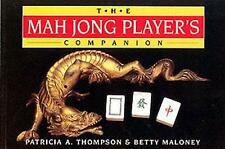Picture 1 of 7

Stock photo







Picture 1 of 7

Stock photo







Seals, Finger Rings, Engraved Gems and Amulets : In the Royal Albert Memorial Museum, Exeter by Sheila Hoey Middleton (1999, Hardcover)

Ancient Gifts (5554)
100% positive feedback
Price:
US $439.99
ApproximatelyAU $674.00
+ $37.83 postage
Returns:
30-day returns. Buyer pays for return postage. If you use an eBay postage label, it will be deducted from your refund amount.
Condition:
Together they illustrate the long history of the practice from about 3000 BC to the 19th century AD. She includes black-and-white photographs of all of them and color photographs of 20 [Book News]. A few famous examples of ancient Greek jewelry, such as an earring in the form of a siren, is a charming example of Greek jeweler's modeling.
Oops! Looks like we're having trouble connecting to our server.
Refresh your browser window to try again.
About this product
Product Identifiers
PublisherRoyal Albert Memorial Museum
ISBN-101855225875
ISBN-139781855225879
eBay Product ID (ePID)72971688
Product Key Features
Publication Year1999
Book TitleSeals, Finger Rings, Engraved Gems and Amulets : in the Royal Albert Memorial Museum, Exeter
TopicJewelry
Number of Pages147 Pages
LanguageEnglish
IllustratorYes
GenreDesign
AuthorSheila Hoey Middleton
FormatHardcover
Additional Product Features
Photographed byWilkins, Robert
SynopsisThis is a catalogue of the rather nice collection of gems in the Royal Albert Memorial Museum, Exeter, consisting almost entirely of the bequests of Lt. Col. L. A. D. Montague in 1946 and of Dr N. L. Corkill in 1966. Together they document the history of seal engraving from 3000 BC to the nineteenth century, from the Near East, Greece and Rome, and the Renaissance, from Akkadian cylinder seals to Sassanian stamp seals and Bactrian ringstones., This is a catalogue of the rather nice collection of gems in the Royal Albert Memorial Museum, Exeter, consisting almost entirely of the bequests of Lt. Col. L. A. D. Montague in 1946 and of Dr N. L. Corkill in 1966.










![KJV Gift and Award Bible Red Letter Edition [Black]: Holy Bible, King James Vers](https://i.ebayimg.com/images/g/UvEAAOSwIsVoIdR~/s-l225.jpg)



![NEW BOOK NIV Gift And Award Bible Red Letter Edition [Black] by HarperCollins Re](https://i.ebayimg.com/images/g/ZwwAAOSwhthmScuC/s-l225.jpg)





